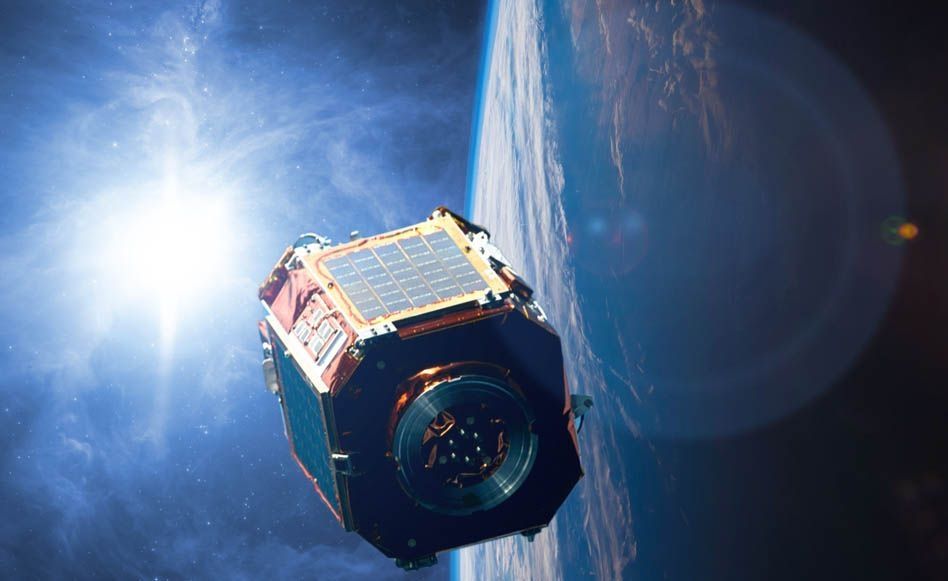A spaceplane shaped telecommunications satellite could use aerodynamics to stay in orbit at 150 kilometres altitude.
Begak told Sputnik news agency the first flights could begin as soon as 2024 and tickets can be purchased for approximately $200,000 to $300,000 a person.
As per Begak, several private companies are presently working on the uncrewed spacecraft known as Selena Space Yacht. The work is being performed with help from the National Technology Initiative (NTI) AeroNet and SpaceNet working groups.
Begak added that the craft lands like a regular aeroplane giving them a chance to land on any airfield. So now they are calculating the best time for space travel and which flight paths would be most comfortable since it’s known that people shouldn’t be in zero-gravity condition for more than 10 minutes. They began working on Selena Space Yacht in 2017.

Last week JP Morgan announced that it had developed its own cryptocurrency, the“JPMCoin”. Lost in the much of the noise about whether or not the JPMCoin is a real blockchain or cryptocurrency is the fact that, for mainstream blockchain adoption, the announcement is a big deal. Don’t get me wrong. The JPMCoin is no more a cryptocurrency than say Fortnight’s V-Bucks or your airline miles are. However, for blockchain the technology (even if JPMorgan isn’t actually using a blockchain) the mere mention of the possibility that blockchain like tech is being adopted by the 6th largest bank in the world, a meaningful way, is a big step towards mainstream adoption.
As you consider this here are a few points you can confidently share with your colleagues and friends:
- The #JPMCoin isn’t a #blockchain or a #cryptocurrency
- That doesn’t matter because JPMorgan’s modern day #DigitalAbacus does solve real business problems and proposes real operational cost savings, aka revenue generators
- #Swift, #WesternUnion & #DeutsheBank should be concerned because when the worlds 6th largest bank adopts a means of saving X% on #settlement, #creditcard, #remittance and #banktransfers this could directly cut into their core revenue streams
- Because JPMorgan didn’t adopt #blockchainlike technology for accounting, for the greater good of transparency, trust, blah blah blah
- They did it for operational efficiencies that would translate into revenue 6 Coincidentally, Ripple rejoices! As the #JPMCoin validates their entire business model as only the 6th largest bank in the world can.
When “liking” your favorite tweet isn’t enough, you can now send small bitcoin transactions.
Announced Saturday, the beta app Tippin has released a new Chrome Extension available to Google browser users. Over Twitter, app users can send bitcoin payments via the Lightning Network, considered a way to make bitcoin transactions feasible at a large scale for the first time.
With the extension enabled, a little lightning bolt symbol pops up inside every tweet next to the more familiar “like” and “retweet” buttons.
Officials in Tokyo are testing a new technology that utilizes weather radar and terrestrial digital radio waves to “quickly and precisely predict torrential rain and tornadoes” up to 20 to 30 minutes in advance, the Mainichi reported on Sunday.
The new technology is being developed by “industry, government and academic bodies including the National Institute of Information and Communications Technology (NICT)” based in Koganei, the Mainichi wrote, and is hoped to be ready for deployment ahead of the 2020 Tokyo Olympics and Paralympics. Existing radar systems are limited in their ability to predict “guerilla rainstorms,” so called because they form quickly from rising, cooling water vapor and strike with little warning in specific areas. However, the new system is much more powerful and capable of estimating the size of raindrops and the structure of clouds, the Mainichi wrote:
Developers say the new “multi parameter phased array weather radar” (MP-PAWR) being tested can predict torrential downpours and tornadoes 20 to 30 minutes before they occur. This is because it has a flat antenna that emits radio waves over a wider range than the rotating bowl-shaped antennas used in traditional radars. It is a combination of an MP radar that enables observation of the size of raindrops, and a phased array radar that provides 3D scans of the structure of clouds in about 30 seconds.
The Longevity Therapeutics Summit was focused on therapeutics that target aging, rather than basic research or theory.
This was the first year for the Longevity Therapeutics Summit in San Francisco, California. Ably organized by Hanson Wade, with John Lewis, CEO of Oisín Biotechnologies, as program chair, the conference focused on senolytics for senescent cell clearance, big data and AI in finding new drugs (“in silico” testing), delivery systems for therapeutics like senolytics, TORC1 drugs, and biomarkers of aging, and the challenges of clinical trial development and FDA approval.
The conference featured a smorgasbord of cutting-edge longevity research, and, as the name implies, the general focus was on therapeutics that target aging, rather than basic research or theory.
Ned David, CEO of Unity Biotechnology, kicked off the conference with a talk about the company’s latest research on senolytics, which clear away senescent (“zombie”) cells, which secrete harmful chemicals that can cause neighboring cells to also become senescent. Unity has made the news recently with an extension request for its clinical trial of its first-in-class senolytics for osteoarthritis. Its preliminary Phase 1 clinical trial results were deemed “safe,” a major step in obtaining FDA approval, and the full results will be available later this year or in 2020.
Water Taxis Can Hover On Water
Posted in transportation
Leading in the Future
Posted in futurism
Plants are master chemists, and Michigan State University researchers have unlocked their secret of producing specialized metabolites.
The research, published in the latest issue of Proceedings of the National Academy of Sciences, combined plant biology and machine learning to sort through tens of thousands of genes to determine which genes make specialized metabolites.
Some metabolites attract pollinators while others repel pests. Ever wonder why deer eat tulips and not daffodils? It’s because daffodils have metabolites to fend off the critters who’d dine on them.








